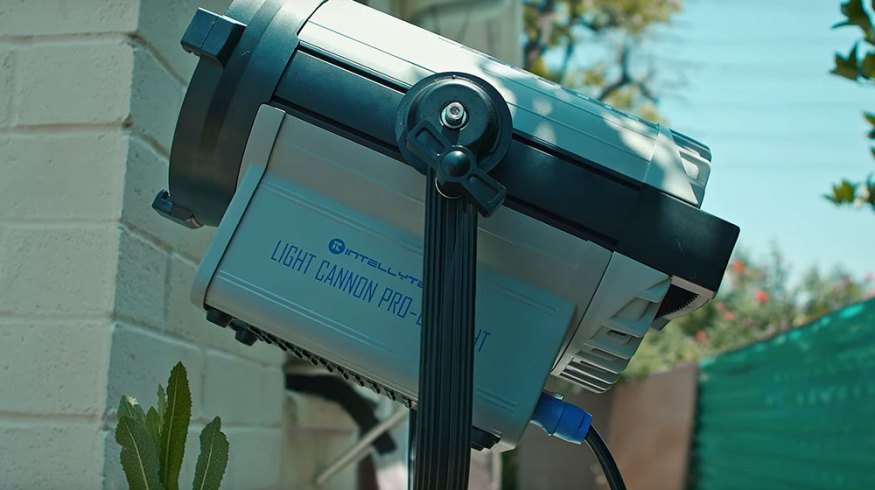
Production Tips: Getting Started with High-Output Lights on Set
Today, we’ll look at the three main reasons filmmakers use high-output lights on their set, how to harness this light, and what it’s good for.
When people go behind the scenes on film sets and see giant light fixtures (like 10K or 20K Fresnels), they often wonder “What could filmmakers possibly use all that light for?”
Let me show you.
Interior Daytime Lighting
The first main use is interior daytime lighting — to match the people being lit with the light coming from outside. Because of the Inverse-Square Law, every time you double the distance, the amount of light reduces by 3/4, so you need to start with a lot of light so, in the end, you get the necessary amount for your shot.
In this video, I have two large Intellytech LED Fresnels bouncing off of a white card. We start with almost 200,000 lux; however, once we bounce it off the card and pass it through a diffusion frame, we’re only getting 1500 lux — or enough to fire an f/5.6 exposure at ISO 400.
Harness the Sun
The next use is to replicate the sun. Often, when shooting outside, you can’t control the position, color, or intensity of the sun (as much as you’d like to), and if you can, it doesn’t stay there long enough for you to get the shots you need. As a result, many filmmakers chose to use high-output HMIs or daylight-balanced LEDs to replicate the sun. To cut down on the harshness of the bare light, it’s a good idea to use a very soft diffusion in front of the light — to make it more pleasing — as well as easier for actors to perform in.
Exterior Daytime Lighting
The last big use for bright lights is lighting daytime interiors from outside. Bouncing big lights off of a card or reflector in order to push the necessary amount of light through a window allows the window to be in the frame yet still be the primary source of illumination. Again, because light falls off the source so quickly, it’s a good idea to start with a lot of light. You can always turn off lights if it’s too bright, but it’s hard to use lights you don’t have.
That’s our look at three common reasons for using big lights on set. As lights get cheaper and technology progresses, we’ll probably see these same kind of lights show up on more indie sets, as well.
Interested in the tracks we used to make this video?
- “Blurry” by KA
- “Moving Day” by Make Music
- “Miss You Too” by Cruen
Looking for more video tutorials? Check these out.






